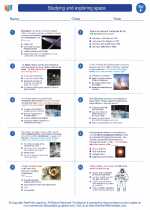What is Glaciation?
Glaciation refers to the formation, movement, and melting of glaciers. Glaciers are large masses of ice that form from the accumulation and compaction of snow over many years. They can move slowly over land, shaping the landscape as they go, and can have a significant impact on the environment.
Causes of Glaciation
Glaciation is primarily caused by changes in the Earth's climate. When temperatures are cold enough, snow can accumulate and compress into ice, eventually forming glaciers. Factors such as the Earth's orbit, tilt, and volcanic activity can also influence the onset of glaciation.
Effects of Glaciation
Glaciation has a profound impact on the Earth's surface. It can carve out valleys, create moraines, and even reshape entire continents. As glaciers move, they erode the land beneath them, creating features such as fjords and cirques. When glaciers melt, they can also contribute to the formation of lakes and rivers.
Glacial Periods
The Earth has experienced several glacial periods, also known as ice ages, throughout its history. These periods are characterized by the expansion of glaciers and the cooling of the climate. The most recent ice age occurred during the Pleistocene epoch, and evidence of glaciation can be found in the form of glacial striations, drumlins, and other landforms.
Human Impact
Human activities, such as the burning of fossil fuels and deforestation, have contributed to changes in the Earth's climate. These changes can influence the extent and frequency of glaciation, potentially leading to shifts in global sea levels and weather patterns.
Study Tips for Glaciation
- Review the different types of glaciers, such as valley glaciers and ice sheets.
- Learn about glacial landforms, including moraines, eskers, and drumlins.
- Understand the role of glaciation in shaping the Earth's surface and influencing the climate.
- Explore the evidence of glaciation in different parts of the world.
- Consider the potential impacts of human activities on glaciation and the environment.
◂Science Worksheets and Study Guides Sixth Grade. Studying and exploring space

 Worksheet/Answer key
Worksheet/Answer key
 Worksheet/Answer key
Worksheet/Answer key
 Worksheet/Answer key
Worksheet/Answer key
 Vocabulary/Answer key
Vocabulary/Answer key
 Vocabulary/Answer key
Vocabulary/Answer key
 Vocabulary/Answer key
Vocabulary/Answer key
 Vocabulary/Answer key
Vocabulary/Answer key
